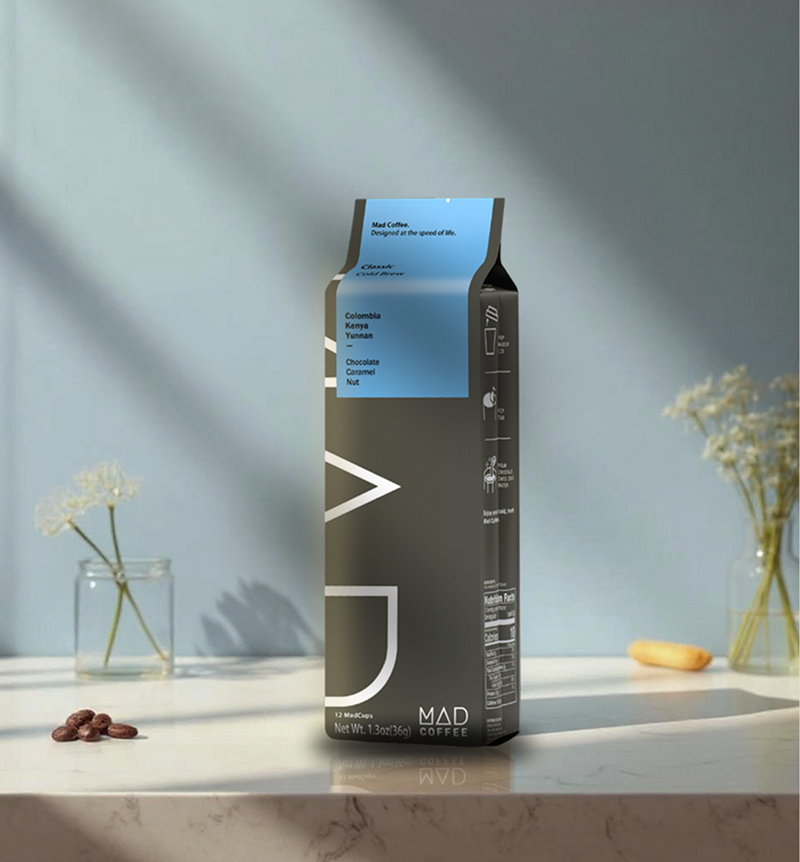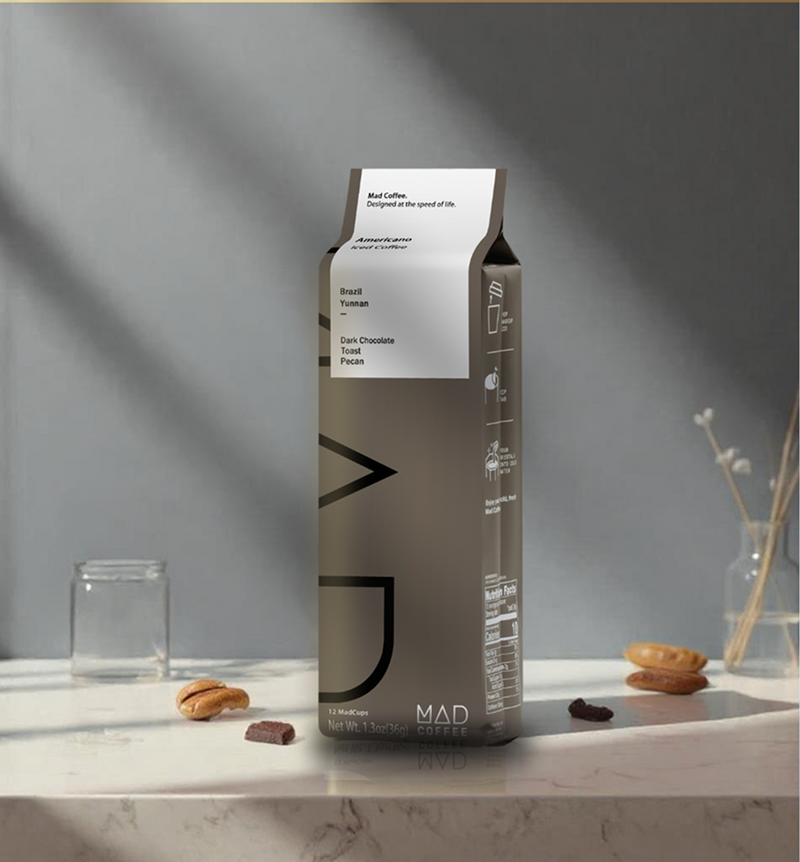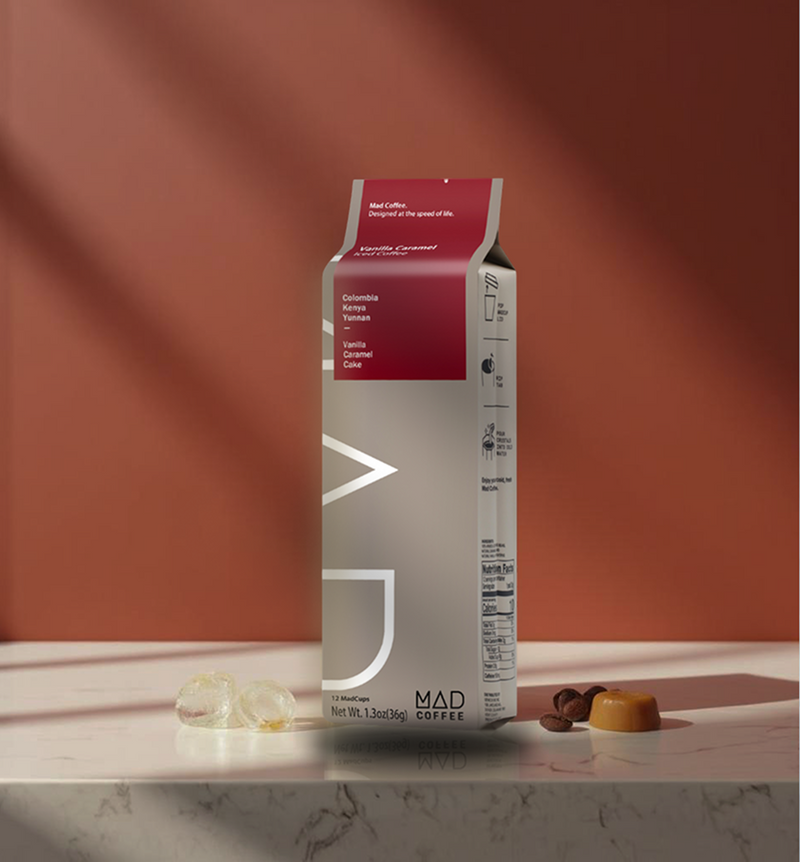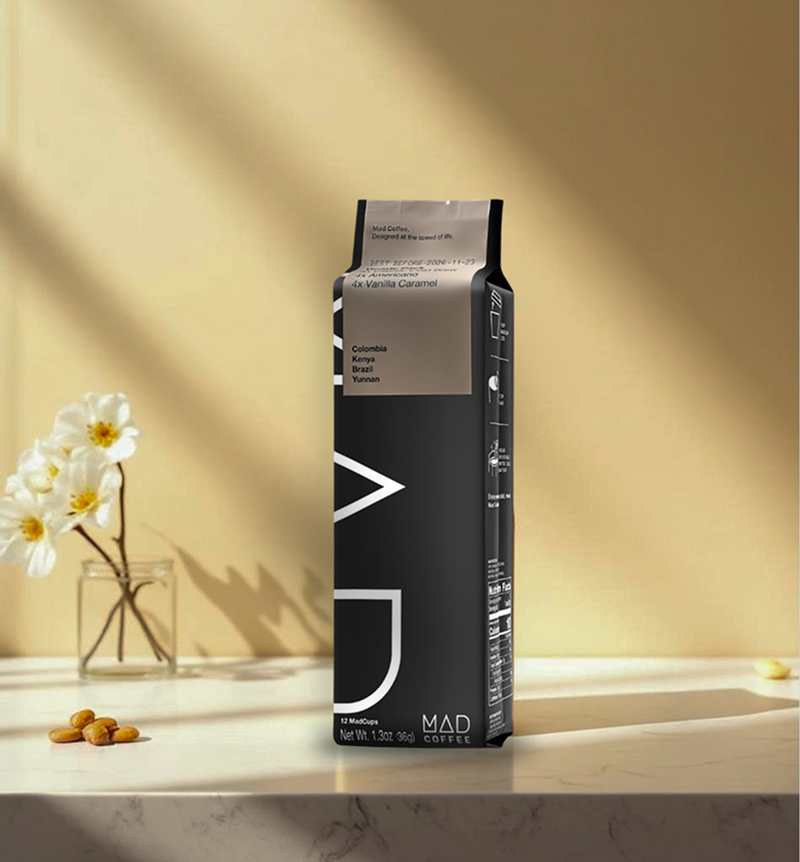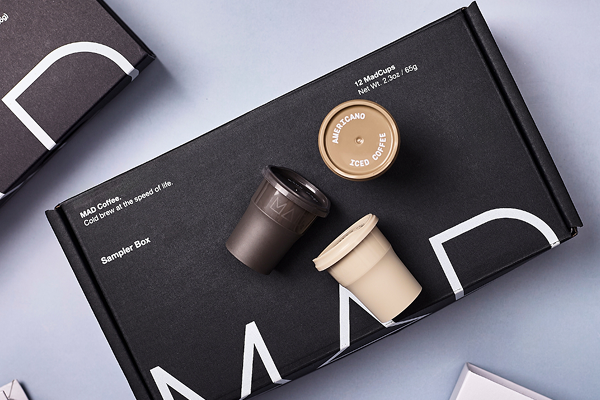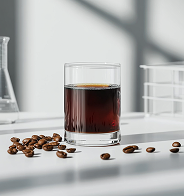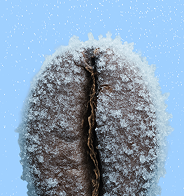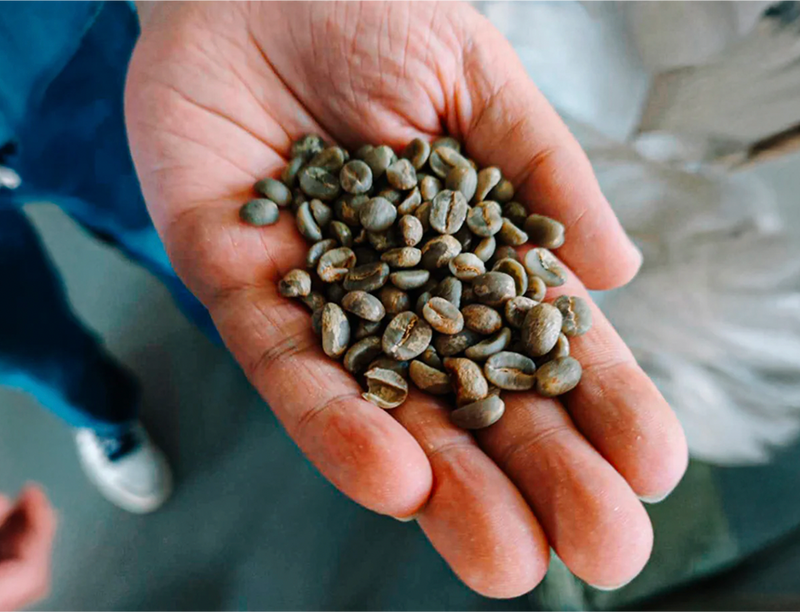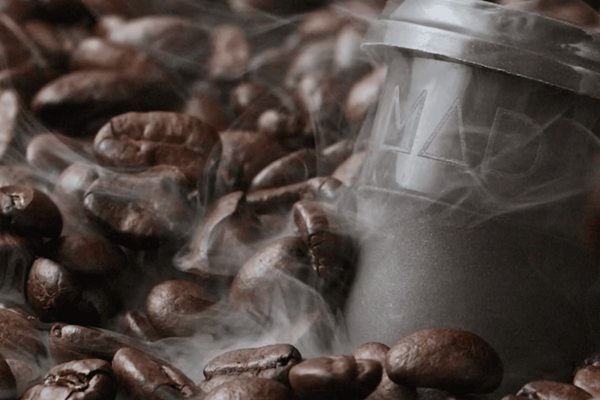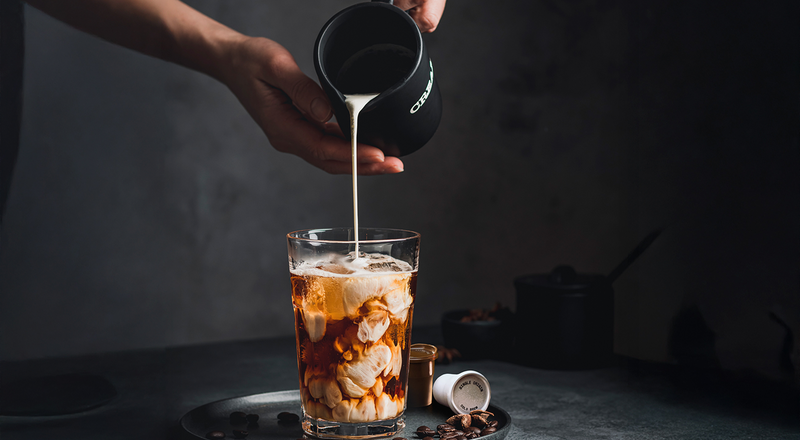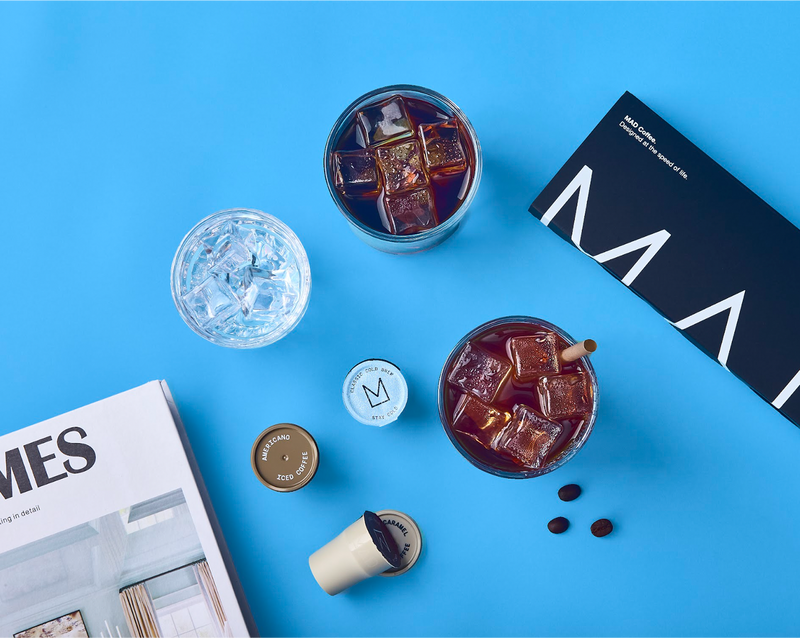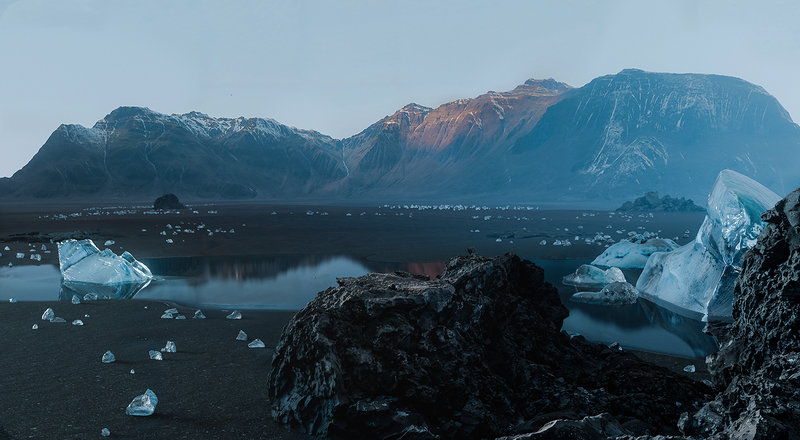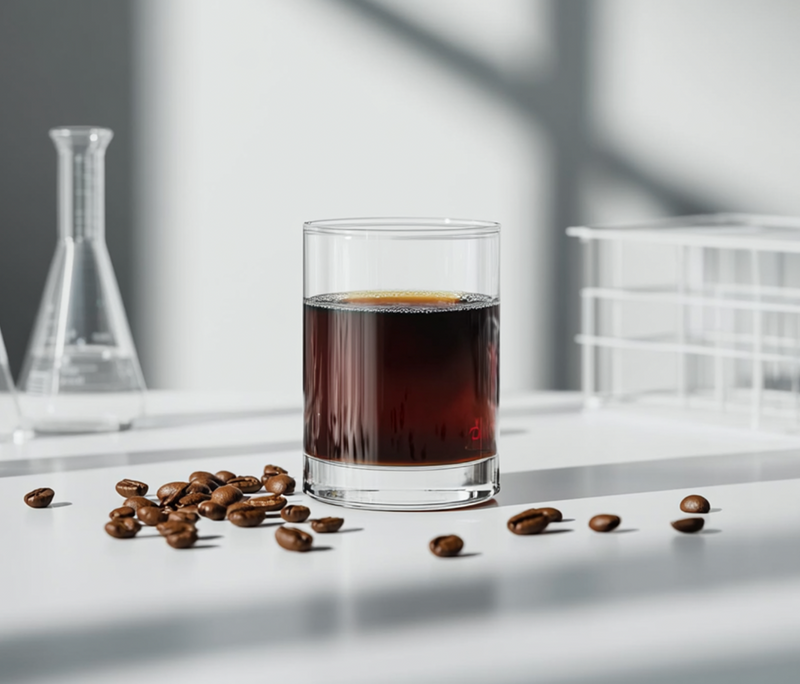Cold Brew vs. Espresso: Key Differences Every Coffee Lover Should Know
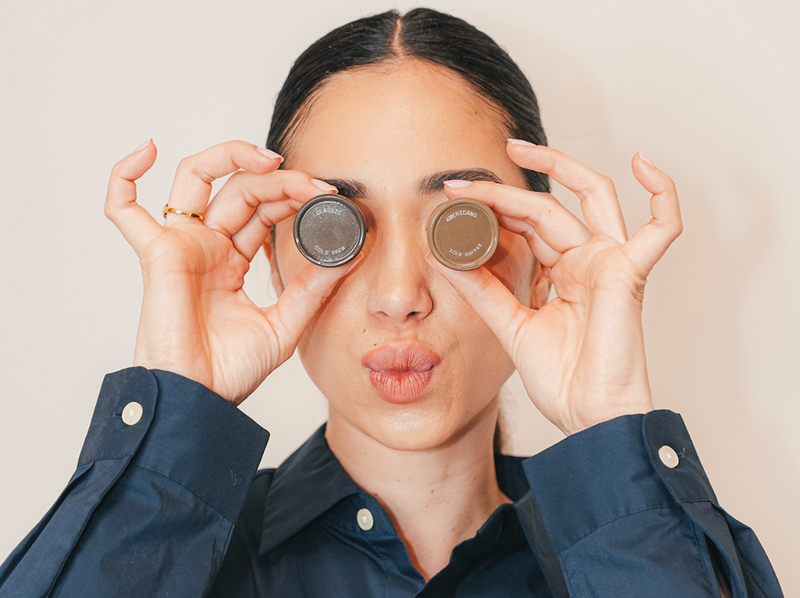
What's the Difference Between Cold Brew and Espresso?
While both cold brew and espresso might give you that caffeinated kick you’re looking for on a busy working day, these two coffee drinks are incredibly different: in brewing method, taste, caffeine content, and even how they make you feel.
If you’re wondering whether cold brew or espresso is better for your daily dose of coffee goodness, you’ve come to the right place.
So, what exactly is the difference between cold brew vs espresso? Let’s find out!
Key Points
-
Cold brew is steeped in cold water for 12–24 hours and has a smooth, mellow, and low-acid flavor.
-
Espresso is brewed by forcing hot water through finely ground coffee under high pressure, resulting in a bold, concentrated shot.
-
Espresso usually has more caffeine per ounce, but cold brew often contains more total caffeine per serving due to larger drink sizes.
-
Cold brew is ideal for sipping slowly, while espresso is perfect for a quick, powerful boost.
-
Brewing method, grind size, and roast level significantly affect the final flavor of both cold brew and espresso.
What Is Cold Brew?
Cold brew is a coffee type brewed with time, not heat, through steeping, a process that requires coffee grounds to be steeped in cold water for approximately 12-24 hours. After steeping, the coffee is strained. The result is a concentrate that can be served over ice cubes, diluted with water or milk, or even enjoyed hot (yes, hot cold brew is definitely a thing!).
This brewing method traces back to 17th-century Japan, where Kyoto-style slow drip coffee was first developed. It is believed that Dutch traders brought it over in need of a portable, fire-free way to make coffee aboard ships. As a result, locals started working on their own cold brew methods.
Over time, variations of the original cold brewing process were developed throughout the world. Nowadays, it is one of the most popular coffee brewing methods among coffee enthusiasts.
What Is Espresso?
In the coffee world, espresso is the shot of adrenaline! It is a type of coffee prepared by forcing hot water through finely ground coffee beans under high pressure. It is typically prepared with an espresso machine, but can also be prepared with a moka pot (although the moka pot does not produce true espressos).
This type of coffee has a small serving size (25-30 ml or 1 US oz), being much smaller than other coffees. However, the caffeine content of an espresso is typically lower than that of other coffee drinks due to its small serving size.
Espresso originates from Italy. The word goes that the first espresso machine was invented by Angelo Moriondo in 1886. His machine was improved in 1901 by Luigi Bezzera. Over time, the popularity of espresso surged, and this coffee type became one of the world’s most favorite beverages! Espresso also laid the foundation for other cafe favorites like iced lattes, cappuccinos, and macchiatos.
Cold Brew vs Espresso: Key Differences
Below, you can find a quick overview of the key differences between cold brew and espresso:
|
Feature |
Cold Brew |
Espresso |
|
Brewing Time and Method |
Steeped in cold/room-temp water for 12–24 hours |
Pressurized hot water through fine grounds in ~30 seconds |
|
Flavor Profile |
Smooth, sweeter taste, low acidity |
More intense coffee flavor, thicker, bold, bitter, complex, more acidic taste |
|
Caffeine Content |
High per ounce when undiluted, but served in larger volumes; stronger than regular coffee |
Higher per ounce, but consumed in smaller amounts |
|
Grind type |
Coarse grind |
Fine grind |
|
Serving Size |
Typically 8–16 oz |
Typically 1–2 oz |
|
Best Served |
Cold or diluted over ice |
Hot and concentrated coffee |
|
Customization |
Great with milk or alt-milks, sweeteners optional |
Often consumed straight, but also the base of many drinks |
|
Shelf Life |
Up to a week when refrigerated |
Brew fresh and consume immediately |
Coffee Brewing Methods & Prep Time
Cold brew is the definition of slow coffee. Coarse grounds soak in cold water or room-temperature water for 12–24 hours in a covered jar, pitcher, or cold brew system. The result is a concentrate you can dilute, mixing it with water or milk. Without a doubt, cold brew concentrate is worth the time (if you have it!) thanks to its incredible taste.
Espresso, by contrast, is perfect for those busy mornings. With the press of a button or pull of a lever, hot water is pushed through fine grounds in a portafilter under ~9 bars of pressure. No steeping. No waiting. Just pure, punchy coffee flavor in 30 seconds flat.
Flavor Profiles
Given cold brew’s extended steeping in cold water, it tastes differently from espresso. This is because the slow extraction process extracts different compounds from the coffee grounds. As such, cold brew is less acidic, has a smoother, milder taste, and is generally sweeter with a gentle chocolatey or nutty finish. Since it’s less acidic, it is also better for sensitive stomachs.
Espresso is concentrated, complex, and layered. It packs a rich mix of chocolate, caramel, fruit, and even floral notes, depending on the bean, into a tiny sip. Its consistency is thicker than that of cold brew: a viscosity similar to the viscosity of warm honey. Its crema adds texture and aroma, so it becomes a multisensory experience!
Caffeine Content
It might be a bit confusing to understand the caffeine content differences between cold brew and espresso because of their serving sizes, so let’s break it down:
-
One espresso shot has more caffeine per ounce (approximately 63 mg/oz).
-
Cold brew, depending on dilution, may have more caffeine per serving (200-250 mg in a typical 12 oz cup), which translates into approximately 16-20 mg of caffeine per ounce.
-
Even if espresso has more caffeine per ounce than cold brew, it is consumed in much lower quantities. Therefore, a diluted cold brew drink has more caffeine content than an espresso shot.
Customization & Versatility
Cold brew is a blank canvas for both hot and cold coffees. Drink it black, dilute it with water, or mix it with oat milk and a dash of maple syrup. You can even froth it up into a nitro cold brew or toss it in a cocktail shaker. It all comes down to personal preferences!
Espresso is typically enjoyed as is, freshly prepared with the help of an espresso machine. However, you can try other espresso drinks that are combined with other ingredients. Among these are:
-
Macchiatos
-
Lattes
-
Americanos
-
Cortados
-
Affogatos (hello, dessert!)
-
Espresso tonics
Equipment needed
For homemade cold brew, you’ll need:
-
Coarse-ground coffee
-
A large jar or pitcher
-
A coffee grinder
-
A fine mesh sieve or a paper filter
-
Cold brew makers with built-in filters or slow-drip mechanisms (optional)
If you prefer cold brew but don’t have time for the steeping process, you can try Mad Coffee, which provides you with a cold brew coffee in seconds!
To make espresso at home, you’ll need:
-
Fine-ground coffee
-
An espresso machine (manual, semi-auto, or automatic)
-
A tamper
-
Optionally (a grinder, scale, and shot timer)
If you want espresso-style coffee without the gear, look into stovetop Moka pots or AeroPress espresso hacks. However, keep in mind that only an espresso machine has the necessary pressure to prepare a true espresso.
Choosing the Right Coffee Beans
Cold brew shines with medium to dark roasts, especially if you plan to add dairy or sweeteners to your coffee. These roast levels bring out chocolatey, nutty, and earthy notes, which steep beautifully into a mellow drink with a smooth taste. You can experiment with different roasts until you find the perfect one for your coffee fix!
Espresso is typically prepared with medium-dark roasts, but lighter roasts are gaining ground for a fruitier, brighter shot. Brazilian, Colombian, and Ethiopian ground beans are all popular among espresso aficionados.
Ultimately, it’s all about experimenting (which coffee enthusiasts definitely enjoy, we do know that!). You can make the same coffee type with the same coffee beans and get completely different results, because the final coffee depends on many other factors, such as how much coffee you use, what equipment you rely on, and others!
Grind size? Coarse for cold brew. Fine for espresso.
Freshness? Always grind fresh before brewing for most intense flavor.
Coffee Types and Classifications
Besides roast type, you should also take into consideration the type of coffee itself. Here’s what you need to know about this:
-
Arabica vs Robusta: Arabica is smoother and less bitter, with more complex flavor notes. Robusta is bolder, more bitter, and higher in caffeine content. For cold brew and espresso alike, Arabica is usually the go-to. However, Robusta beans create a denser, creamy layer on top of espresso, so you might want to give it a try as well.
-
Specialty vs commercial: specialty coffee has distinct flavors, is ethically sourced, and roasted with precision. Commercial coffee is typically roasted and blended for consistency and affordability, and it may lack the richness of specialty coffee.
Coffee Bean Sourcing and Quality
The quality and origin of your coffee beans have a major impact on the final flavor in your cup (and on the environment!). It’s about where the coffee beans are grown, how they’re processed, and how ethically they’re sourced. Here’s what to keep in mind:
-
Origin: coffee beans come from different regions and have different flavor profiles. For example, Ethiopian beans are bright, fruity, and floral, while Colombian beans are balanced and with natural sweetness. Brazilian beans, on the other hand, have chocolatey and nutty tones. You can choose single-origin beans or blends.
-
Ethical sourcing: look for beans with certifications like Fair Trade, Rainforest Alliance, or Direct Trade. These labels indicate that the coffee was grown with attention to environmental sustainability and fair labor practices.
-
Quality grade: if you’re looking for high-quality beans, go for specialty-grade beans, as they have more distinct flavors and a rich flavor profile.
Flavor Profiles
Like wine or chocolate, coffee isn’t simply strong or bitter. It has a wide range of tasting notes that can surprise you: fruity, floral, nutty, spicy, and everything in between! These flavor characteristics come from a combination of bean origin, processing method, and roast level.
For example, dark roasts, which are usually used for cold brew and espresso, tend to highlight chocolate, caramel, and nutty notes. They’re smooth, rich, and low in acidity.
Light roasts, which are favored for iced coffee, bring out fruity, floral, and citrusy flavors.
Quick Cold Brew Coffee Recipes
If you want to prepare cold brew, here are some delicious recipes of the most popular coffee drinks!
-
Classic cold brew
Ingredients:
-
1 cup coarsely ground coffee
-
4 cups cold filtered water
Instructions:
-
Combine coffee and water in a large jar or French press.
-
Stir to ensure all grounds are saturated.
-
Cover and steep for 12–24 hours in the fridge.
-
Strain through a fine mesh sieve or coffee filter.
-
Serve over ice. Dilute with water or milk if it’s too strong.
Tip: Store concentrate in the fridge for up to a week!
2. MapCup Cold Brew
Ingredients:
-
1 MadCup
Instructions:
-
Pour 7-10 oz of cold or hot water into a glass
-
Pop the MadCup lid and rip the tab
-
Pour the coffee crystals into the water.
-
Stir or shake.
With Mad Coffee, you skip the steeping, filtering, and measuring processes! You get a premium cold brew that fits in your pocket and is ready in just a few seconds!
3. Cold Brew Latte
Ingredients:
-
½ cup cold brew concentrate
-
½ cup milk or milk alternative
-
Ice
Instructions:
-
Fill a glass with ice.
-
Add milk.
-
Pour in cold brew concentrate.
-
Stir and enjoy!
Optional: Add a splash of vanilla syrup or maple syrup for sweetness.
4. Spiced Vanilla Cold Brew
Ingredients:
-
½ cup cold brew concentrate
-
½ cup milk
-
½ tsp ground cinnamon
-
½ tsp ground turmeric
-
1 tsp vanilla syrup
-
Ice
Instructions:
-
Add the cold brew, milk, cinnamon, turmeric and vanilla syrup to a shaker.
-
Shake or stir vigorously.
-
Pour over ice and sprinkle a little cinnamon on top.
Hello, dessert-in-a-cup!
Easy Espresso-Based Recipes
Here are some easy espresso-based coffee recipes!
1. Straight Espresso Shot
Ingredients:
-
Fresh ground espresso coffee
Instructions:
-
Brew a double shot (about 2 oz) using your espresso machine or Moka pot.
-
Serve as-is for a bold, concentrated hit.
2. Iced Espresso Tonic Coffee Drink
Ingredients:
-
1 shot espresso (or 2 oz strong coffee)
-
½ cup tonic water
-
Ice
-
Optional: orange slice or zest
Instructions:
-
Fill a glass with ice.
-
Pour tonic water first.
-
Slowly pour in the espresso to create a layered effect.
-
Garnish with a citrus twist.
Refreshing and slightly fancy. An espresso spritz!
3. Espresso Affogato (Dessert-Style)
Ingredients:
-
1 scoop vanilla gelato or ice cream
-
1 shot hot espresso
Instructions:
-
Scoop ice cream into a small bowl or glass.
-
Pour hot espresso over it.
-
Eat immediately before it melts into oblivion.
Affogato? More like affo-gotta-have-it.
Mad Coffee: Cold Brew in a Few Seconds
Why grind, steep, and wait? At Mad Coffee, we’ve already done the hard work! With our revolutionary MadCups, you can enjoy cold brew coffee anywhere in just a few seconds!
-
No machines.
-
No filters.
-
No waiting.
-
No local coffee shops.
Just pour, stir, and sip.
Our MadCups are made from 100% Arabica beans, sourced directly from family farms through Direct Trade practices. We use our proprietary LyoExtract™ technology to flash-crystallize coffee at peak freshness, locking in flavor without additives or fillers.
Cold or hot, our coffees are lab-tested, free of microplastics, compostable, and packed with flavor. In short, we’ve got your back on busy days with our sustainably-sourced cold brew that will make you feel like we’re literally delivering free time packed inside a tiny cup!
FAQs
Can I use cold brew instead of espresso?
Technically, yes, you can use cold brew instead of espresso. However, it depends on the drink you’re making. If you’re making an iced coffee-based drink (an iced latte, for example), you can use cold brew. But for traditional espresso drinks like cappuccino, the taste and texture won’t be the same.
What are the disadvantages of cold brew coffee?
The disadvantages of cold brew coffee include the long steeping process, the lower acidity and flatter taste, and the higher caffeine content (given that it’s prepared in a concentrate, but it is usually diluted).
Is cold brew or espresso stronger?
While espresso does have more caffeine content per ounce, cold brew is usually stronger because it delivers more total caffeine due to larger serving sizes.
How much cold brew is a shot of espresso?
To match a shot of espresso, you’d need roughly 1-1.5 oz of undiluted cold brew concentrate. A standard shot of espresso is about 1 oz with 60-70 mg of caffeine. On average, 1 oz of cold brew concentrate has 50-70 mg of caffeine. However, cold brew is typically diluted before drinking, which significantly lowers its caffeine content.
